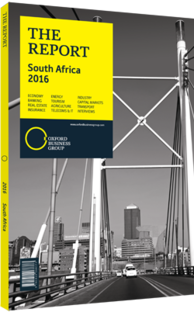South Africa's residential real estate segment increasingly attractive for investment
While real estate investment trusts (REITs) are relative newcomers to the South African market, with the regime governing the investment vehicle codified for the first time in 2013, they have outperformed other classes of assets in the first three quarters of 2015. Looking ahead, the residential component of the property market, which has yet to be tapped by REITs, offers new opportunities for growth and provides a further boost to the investment appeal of trusts.
Bucking The Trend
REITs posted the highest year-to-date (YTD) return on investment (ROI) of any asset class in South Africa as of October 2015. Returns reached 15.6%, with a year-on-year (y-o-y) ROI of 20.2%, according to Cape Town-based Catalyst Fund Managers. Moreover, equities posted YTD returns of 11.3%, with bonds trailing at 4%.
Laurence Rapp, chairman of the SA REIT Association, representing all listed REITs, stated that the segment had continued to gather momentum in terms of both earnings and capitalisation, despite the slower economic backdrop. According to IMF forecasts, the economy is expected to expand by 1.4% in 2015, down from an average of 3.5% in the decade to 2010.
Market Presence
A total of 33 domestic REITS and three foreign trusts are listed on the Johannesburg Stock Exchange (JSE), with the combined market capitalisation for the segment standing at more than R455bn ($39.3bn). Local REITs accounted for around R340bn ($29.4bn) of the total as of August 2015, up 43% y-o-y. Despite being relatively new to the exchange, listed property now has a larger presence than either the retail or health care sectors, accounting for 5.8% of the FTSE/JSE All Share Index.
The steady nature of REIT returns is attracting investors from many areas of the market, according to Keillen Ndlovu, head of listed property funds at Johannesburg-based asset manager Stanlib. “Listed property remains the best asset class for growing income streams,” he told industry press in early November 2015. “In contrast to equities, it delivers predictable income and less volatile earnings growth, even in an economic downturn.”
Taking Up Residence
The REIT segment is dominated by funds operating in the retail, office and industrial segments, with the residential component accounting for less than 2% of the total listed property market. However, this may be about to change, according to François Viruly, director of property research firm Viruly Consulting. “One of the biggest game-changers, in my opinion, is that we will start seeing REITs in the residential segment,” Viruly told OBG. “This will bring institutional investors back into residential property for the first time since rent controls were introduced in the 1970s.”
There are signs that change is already afoot. In June 2015 Indluplace became the first residential-only REIT to list on the JSE. With a value of R1.6bn ($138.2m) at the time of listing, Indluplace manages almost 100 properties comprising some 3600 residential units. In October residential developer Baldwin Properties also announced plans to list, saying it was looking to build up a rental portfolio worth between R2bn ($172.8m) and R3bn ($259.2m) by 2020 to run alongside its other build-to-sell projects.
Risk Of Headwinds
The segment has seen revenue growth ease slightly, with the sector’s returns somewhat lower than the current global average for REITs. According to a report by Catalyst Fund Managers, issued in mid-October, the world average for listed property funds stood at 15.4% for the first nine months of 2015, compared to 13.3% in South Africa.
Although an anticipated interest rate hike in the US could see global investment flows redirected away from emerging markets – which could put greater pressure on South Africa’s property market – returns on listed property funds are expected to maintain investor appeal by outpacing other classes of assets in the country, as well as GDP growth more broadly.
You have reached the limit of premium articles you can view for free.
Choose from the options below to purchase print or digital editions of our Reports. You can also purchase a website subscription giving you unlimited access to all of our Reports online for 12 months.
If you have already purchased this Report or have a website subscription, please login to continue.

